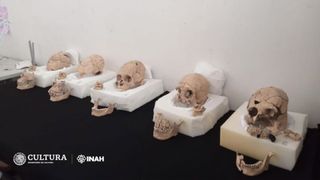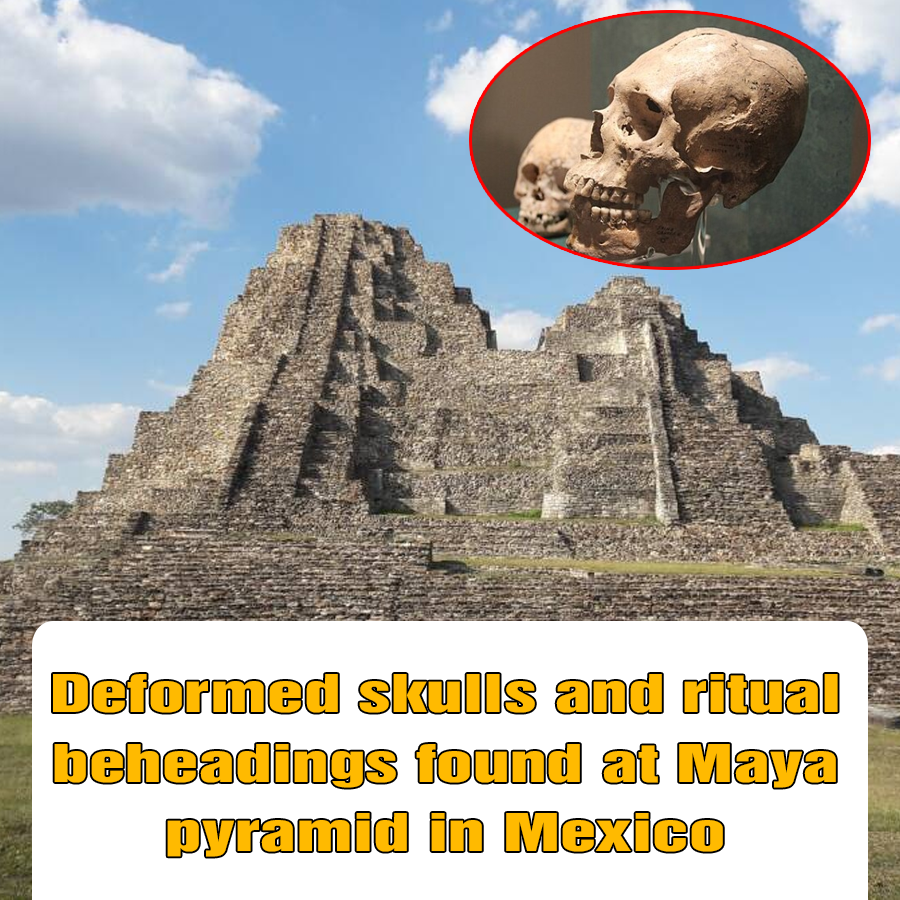Archaeologists announced that some individuals buried at a Maya pyramid more than 1,000 years ago had deformed skulls and had been killed in ritual beheadings.

Remains of five of the 13 individuals found at Structure 18 at the Moral-Reforma Archaeological Zone. (Image credit: Miriam Angélica Camacho Martínez/INAH)
Archaeologists in Mexico have discovered the burials of 13 individuals — including two who were beheaded as part of sacrificial rituals and five whose skulls had been elongated through intentional deformation — near a Maya pyramid at the Moral-Reforma archaeological site near Tabasco.

The skulls belong to males, some of whom had dental pathologies. (Image credit: Miriam Angélica Camacho Martínez/INAH)
Mexico’s National Institute of Anthropology and History (INAH) initially found the burials in April but announced their findings this week after analyzing the human remains. The burials date to between A.D. 600 and 900, a time when the Maya civilization flourished in the region, the INAH said in an Aug. 23 translated statement. The burials consist of human skulls, fragments of jaws, and bones of the lower and upper extremities, the archaeologists said in the statement. Their analysis also revealed that some of the bones had been covered in red pigment.
An anatomical examination revealed that all of the individuals were men between the ages of 17 and 35. During the first millennium, the Maya sometimes sacrificed their prisoners of war, but it’s unclear for now if these people were captives.

The ruins of the pre-Hispanic town of Moral-Reforma in Tabasco, Mexico, where archaeologists found the buried remains of 13 individuals. (Image credit: Lev Levin via Shutterstock)
The analysis also found that at least five of the individuals had modified, elongated skulls — a shape that can be achieved by constricting a person’s head with bands when they are young. This was frequently practiced by the Maya and other ancient societies — including people in Japan, the Huns, medieval European women, and some Native American tribes — and may have raised the social status of those who underwent this practice, the archaeologists said.
Moral-Reforma was the center of a Maya kingdom that at times was allied with other Maya cities, such as Calakmul and Palenque, according to the INAH. Excavation and research at Moral-Reforma is ongoing; so far, archaeologists have unearthed 76 buildings dating to before the arrival of the Spaniards. However, the Maya worshipped many deities, and it’s not clear which god(s) this particular pyramid served.






